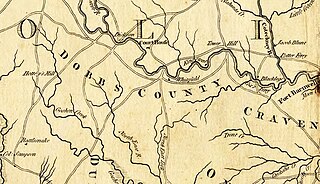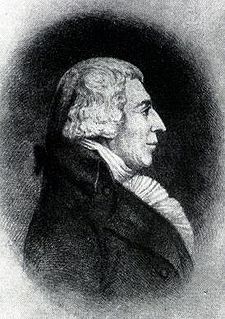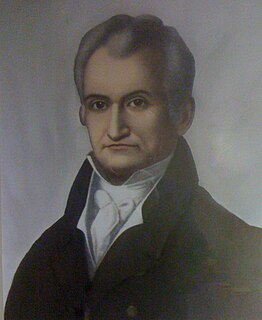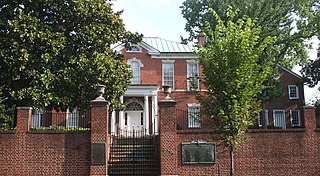Background
His sons, Needham Whitfield and William Whitfield III were in the Battle of Moore's Creek Bridge during the revolutionary war. He was a former clerk to Colonel Caswell and the other a private in the Light Horse Cavalry, taking prisoner General McDonald, who was the Commander of the Tories. [2]
William Whitfield III was a soldier and slave owner. The son of William Whitfield II, he fought in the Battle of Moore's Creek Bridge during the American Revolutionary War.

The Battle of Moore's Creek Bridge was a battle of the American Revolutionary War fought near Wilmington in present-day Pender County, North Carolina, on February 27, 1776. The victory of North Carolina Revolutionary forces over Southern Loyalists helped build political support for the revolution and increased recruitment of additional soldiers into their forces.

Richard Caswell was the first and fifth governor of the U.S. State of North Carolina, serving from 1776 to 1780 and from 1785 to 1787. He was also major general over all North Carolina militia in 1780 and from 1781 to 1783.
William was a Dobbs County member to the 1761 and 1762 North Carolina General Assembly held in Wilmington. In 1779 he was a member of Governor Richard Caswell's Council held in New Berne, and a Justice of Peace for Johnston County, North Carolina. He was later a Colonel. [3]

Dobbs County is a former county located in the Province of North Carolina and later the state of North Carolina. It was formed in 1758 from Johnston County, though the legislative act that created it did not become effective until April 10, 1759. It was named for Arthur Dobbs, Governor of the Province of North Carolina from 1754 to 1765.

The North Carolina General Assembly is the bicameral legislature of the State government of North Carolina. The legislature consists of two chambers: the Senate and the House of Representatives. The General Assembly meets in the North Carolina Legislative Building in Raleigh, North Carolina, United States.

Wilmington is a port city and the county seat of New Hanover County in coastal southeastern North Carolina, United States.
This page is based on this
Wikipedia article Text is available under the
CC BY-SA 4.0 license; additional terms may apply.
Images, videos and audio are available under their respective licenses.

Andrew Pickens was a militia leader in the American Revolution and a member of the United States House of Representatives from South Carolina.
John Williams was a signer of the United States' Articles of Confederation. He was one of the founders of the University of North Carolina. During the American Revolutionary War, Williams was a colonel in the North Carolina militia. In 1777 and 1778, he was a member of the North Carolina House of Commons and served as Speaker of the House. Williams was a member of the Continental Congress in 1778 and 1779. He served as a superior court judge both during the colonial era and after the new state of North Carolina was established in 1776. Sitting alongside other superior court judges as part of a Court of Conference, Williams heard the landmark case, Bayard v. Singleton, which announced the principle of judicial review on the state level before Marbury v. Madison did so on the federal level.

Benjamin Williams was the 11th and 14th Governor of the U.S. state of North Carolina, from 1799 to 1802 and from 1807 to 1808. He was the first of two North Carolina Governors since the American Revolution to serve nonconsecutive terms.

Richard Dobbs Spaight was the eighth Governor of the U.S. state of North Carolina from 1792 to 1795.:
The Hillsborough District Brigade of militia was an administrative division of the North Carolina militia established on May 4, 1776. Brigadier General Thomas Person was the first commander. Companies from the eight regiments of the brigade were engaged in 55 known battles and skirmishes in North Carolina, South Carolina, and Georgia during the American Revolutionary War. It was active until the end of the war.

Colonel William Polk was a North Carolina banker, educational administrator, political leader, renowned Continental officer in the War for American Independence, and survivor of the 1777/1778 encampment at Valley Forge.
The Moore family was a prominent political family of North and South Carolina during the 18th and 19th centuries. They are believed to be related to or descended from Roger O'Moore, a leader of the Irish Rebellion of 1641. The family is most closely associated with the Cape Fear coastal region around Wilmington. Several members of the family held prominent political positions in colonial North and South Carolina, were officers in the Continental Army during the American Revolutionary War, or held high positions in the United States federal government during the early years of the republic.
William Cage was a politician in North Carolina and Tennessee and an early settler in Tennessee. He was a member of the North Carolina House of Representatives in 1783 and 1784. He briefly held the position of State Treasurer and Speaker of the State House of Representatives in the 18th century, from August 1784–June 1785, representing the proposed State of Franklin.
Thomas Eaton was a military officer in the North Carolina militia during the War of the Regulation in 1771 and American Revolutionary War from 1775 to 1784. He was a member of the North Carolina Provincial Congress and North Carolina House of Commons for several terms simultaneously with his military service. Eaton was a member of the North Carolina Council of State under Governor Richard Caswell. Eaton commanded soldiers in the battles of Brier Creek and Guilford Courthouse. At the time of the 1790 census, Eaton was one of the largest slaveholders in North Carolina.

Thomas Polk was a planter, military officer in the Continental Army during the American Revolutionary War from 1775 to 1781, and a politician who served in the North Carolina House of Commons, North Carolina Provincial Congress, and Council of State. Polk commanded the 4th North Carolina Regiment in the Battle of Brandywine. In 1786, Polk was elected by the North Carolina General Assembly to the Congress of the Confederation, but did not attend any of its sessions. Polk was a great-uncle of the 11th President of the United States, James K. Polk.

Nathan Bryan Whitfield was a planter, architect and General of the North Carolina Militia during the American Civil War.
John Sampson (1719–1784) was a politician in North Carolina during and after the American Colonial era. After immigrating to the colony from northern Ireland, he settled near Wilmington. He was appointed to local offices, raised a militia to defend against the Spanish Alarm, and served as a Revolutionary War Patriot militia officer. He was an early settler in Duplin County, North Carolina. He served as mayor of Wilmington, North Carolina starting in 1760. Sampson County, North Carolina was named for him.
The New Bern District Brigade was an administrative division of the North Carolina militia during the American Revolutionary War (1776–1783). This unit was established by the North Carolina Provincial Congress on May 4, 1776, and disbanded at the end of the war.
William Caswell was a general in North Carolina militia in the American Revolution, Dobbs County, North Carolina county official, North Carolina state legislator, and planter.
The Dobbs County Regiment was a unit of the North Carolina militia that served during the American Revolution. The regiment was one of thirty-five existing county militias that were authorized by the North Carolina Provincial Congress to be organized on September 9, 1775. All officers were appointed with commissions from the Provincial Congress. On May 4, 1776, the regiment was placed under the command of the New Bern District Brigade commanded by Brigadier General Richard Caswell. The regiment was active until the end of the Revolutionary War in 1783 and was engaged in twelve known battles and skirmishes in North Carolina, South Carolina and Georgia.
The Wayne County Regiment was a unit of the North Carolina militia that served during the American Revolution. The North Carolina General Assembly created Wayne County and its regiment of militia out of part of Dobbs County and its regiment of militia on November 2, 1779. The officers were appointed and commissioned by the Governor of North Carolina. The regiment was disbanded at the end of the war.














